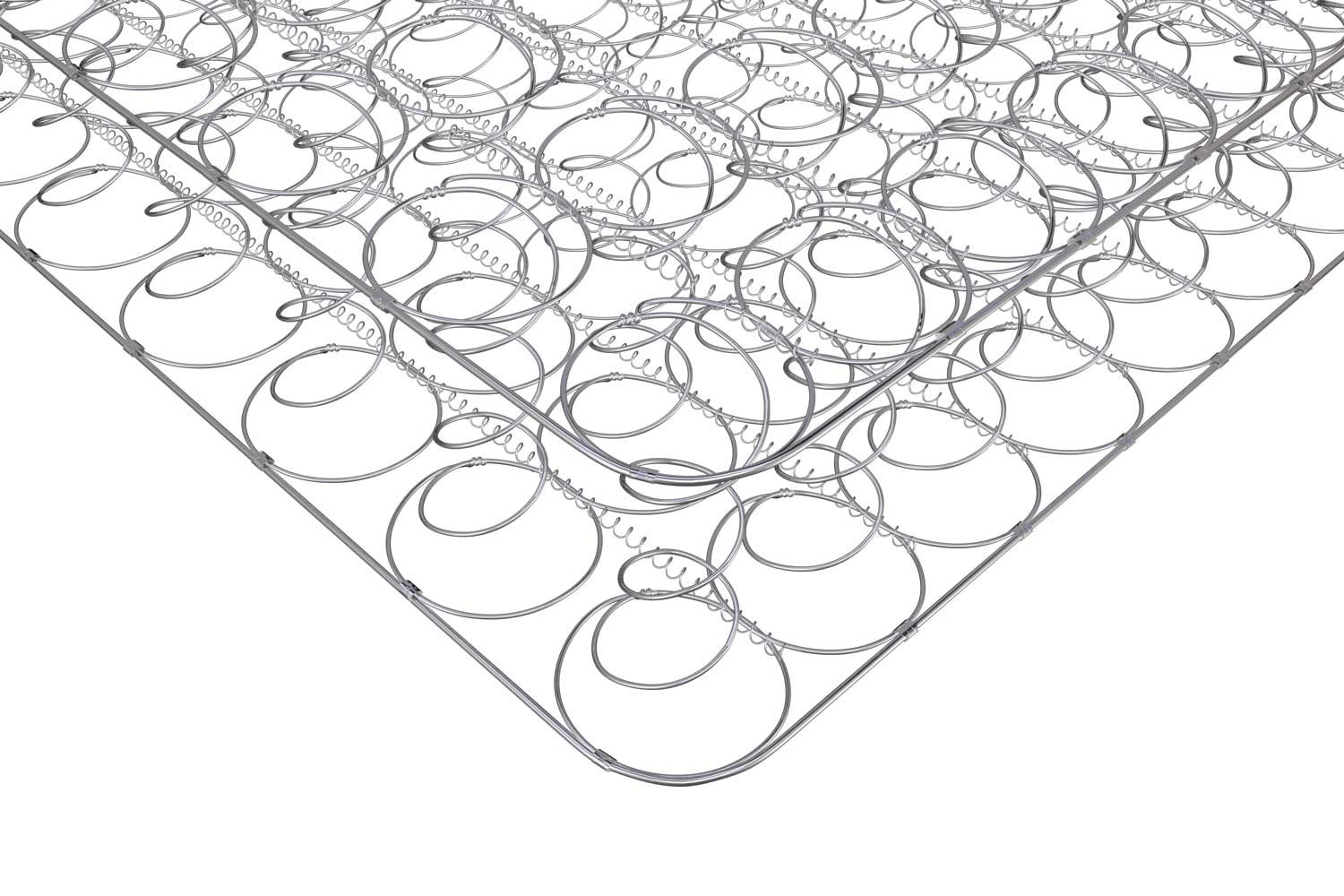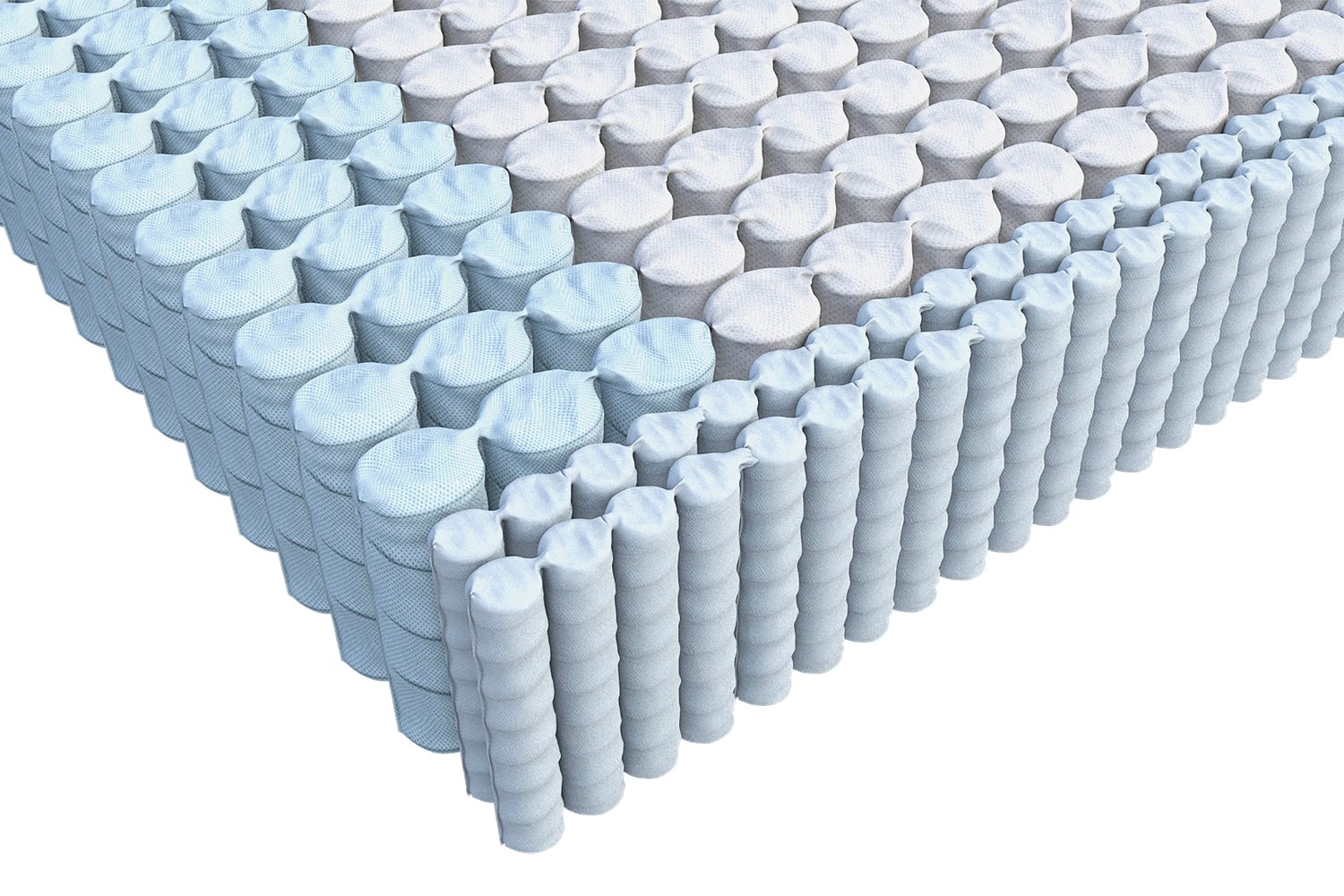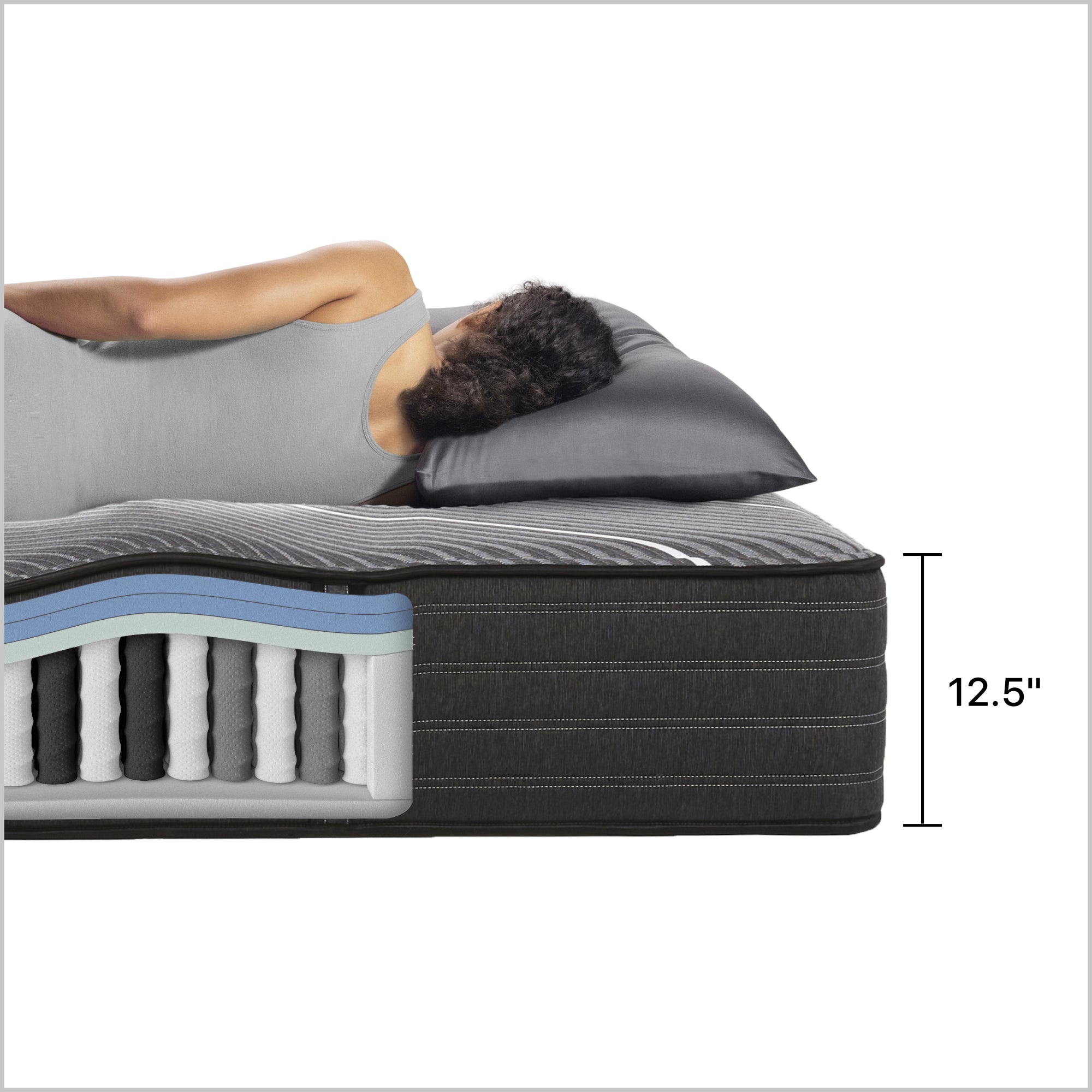Are Coil Mattresses Good?
From the Traditional Innerspring to the Modern Hybrid
Mattresses designed with steel coils are generally the best option for those people seeking a traditional feel, but these are also used in modern "hybrid" designs which blend time-tested support and conforming specialty foams.
Are Innerspring Mattresses Better than Foam?
Innerspring mattress have been around for a long time, but that doesn't mean they are a poor choice. In fact, we generally think that innerspring designs are some of the most durable mattresses in the industry. These are particularly good choices for heavier sleepers and stomach sleepers, who might find that many foam options lose support in the long term.
Springs have been used in mattresses since the 1800s, and even today, most mattresses still include at least some type of spring. The simplest (and least expensive) mattresses are made almost entirely of springs, with just a thin layer of foam or padding on the top and/or bottom.
However, higher-end and more modern models like the Saatva and WinkBed mattresses use pocket springs to improve motion isolation, along with multiple layers of coils for both support and comfort. Other recent innovations include zoned support layers, where coils in different parts of the bed provide softer or firmer support by varying the type of wire, size, and number of turns in the coil.
An advantage to mattresses made mostly of springs is good airflow. Many people also like that innerspring mattresses have more bounce than foam or latex mattress designs.
What's the Difference Between Innerspring and Pocket Spring Mattresses?
Innerspring is a general term that encompasses all mattresses that use any type of flexible metal coil, whereas the term "pocket springs" or "Marshall coils" refers to a specific subset of innerspring mattress.
At GoodBed we break these down into two main categories. Connected coils are what you probably remember from childhood, where the inside of the bed is a collection of steel coils connected to each other via a helical wire. These helical wires bind the coils together and ensure that these function as a unit. The other main category are the aforementioned "pocket springs." This is a relatively new type of system wherein each metal coil is encased in its own fabric sleeve. This allows each coil to move independently, and since the springs never touch each other, reduces the chance of bed squeaks and creaks. Another difference is that pocket spring mattresses are usually better in terms of motion isolation.
Types of Springs
Connected Coils: Connected coils are made in a few ways, but in each case, springs are connected to the springs next to them. (Check out our Coil Guide if you want the nitty gritty on how connected coil mattresses are made.) A key advantage is durability, since weight is distributed across the whole bed. A disadvantage can be noise, since there's the potential for metal to rub on metal, creating the signature mattress 'squeak.' And connected coil innerspring mattresses aren't the best in terms of motion transfer, since compressing one spring affects all the nearby springs, making it more likely a partner will feel your movements.
Additionally, many brands will speak somewhat derisively about connected coils and state that these are are "worse than pocket springs." We don't think that's the case - we just think that they're fundamentally different than pocket springs. Many people still prefer connected coils.
Below is an example of a traditional innerspring with connected coils.

Pocket springs: Pocket springs (also called "Marshall coils") are the other main category of innerspring. This style isolates each spring in a fabric pocket, which minimizes motion transfer and noise since each coil compresses independently. A potential downside could be durability, since the 'work' is not shared by nearby springs as in a connected coil system.
And while we think most pocket spring units are pretty solid (they are typically made of steel after all), there are a few particular units that we think are maximally durable and recommend for larger body types and people concerned with durability. We refer to these as HD and UHD (Heavy Duty and Ultra Heavy Duty, respectively) units. To make this determination, we've developed a proprietary system that takes into account both the coil thickness and the number of coils in the mattress and calculates a GoodBed Strength Index. Higher scores reflect more raw steel and are thus more robust.
Below is an example of a typical pocket spring unit.

Decision factors when choosing an innerspring mattress
If you like the traditional feel and proven durability of innerspring mattresses, and want to learn more, we delve deeper into the factors and features that impact your decision.
Padding
Learn about the many components of mattress padding that determine a bed's comfort level, including memory foam, pillow-tops, Euro-tops, quilting, tufting, and ticking.
Coils
Discover the important differences among mattress coils, and learn how they vary in support and durability, including wire gauge, coil count, number of turns, and more.
Foundation
Find out how foundations, such as box springs, torsion modules, and low-profile foundations, can affect the support and durability of your bed.
Hybrid Mattress: Coils + Comfort Materials
The other term that comes up nowadays is the word "hybrid." And unfortunately, there's not one universal definition for this term. Different manufacturers use this word in different ways with many calling any mattress that uses pocket springs a "hybrid." At GoodBed, we use this term to mean a pocket spring system with at least two inches of specialty foam on top. We think this is generally the best definition of the term, as this style of construction effectively "hybridizes" the feel of the specialty foam with the underlying pocket springs.
As an example, here's a cutaway of the Beautyrest Black Hybrid BX-Class Plush.

There are a large number of hybrid mattresses on the market, many of which have been reviewed by GoodBed, including the Avocado Green mattress, which uses natural latex over pocket springs. The Nest Sparrow Hybrid uses a high-performance specialty foam over pocket springs. The WinkBed uses two layers of pocket springs under gel foam. The ultra-luxury Hästens 2000T mattress uses natural wool fleece and layers of horsehair atop pocket springs. These are just some examples of how companies are using traditional coils on the bottom with more modern comfort materials on top.
Head to our Hybrid Mattress Buyer's Guide for more on this type of mattress, which combines tradition with modern materials.












































